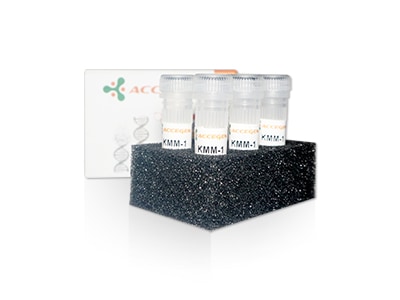Featured Products
Explore Products- In-Stock Tumor Cell Lines
- Human Orbital Fibroblasts
- Human Microglia
- Human Pulmonary Alveolar Epithelial Cells
- Human Colonic Fibroblasts
- Human Type II Alveolar Epithelial Cells
- Human Valvular Interstitial Cells
- Human Thyroid Epithelial Cells
- C57BL/6 Mouse Dermal Fibroblasts
- Human Alveolar Macrophages
- Human Dermal Fibroblasts, Adult
- Human Lung Fibroblasts, Adult
- Human Retinal Muller Cells
- Human Articular Chondrocytes
- Human Retinal Pigment Epithelial Cells
- Human Pancreatic Islets of Langerhans Cells
- Human Kidney Podocyte Cells
- Human Renal Proximal Tubule Cells




 -Y, Iq+, -2, +t(1:2) (cen:cen), +7, 12q+, 14q+, +mar, and lack Epstein-Barr virus-determined nuclear antigen. Surface markers include E rosette (-), IgG Fc receptor (-), C3 receptor (-), S-Ig (+), TdT (-), and asialo-GM1 (-). Notably, KMM-1 cells are shown to secrete immunoglobulins into the culture medium.
-Y, Iq+, -2, +t(1:2) (cen:cen), +7, 12q+, 14q+, +mar, and lack Epstein-Barr virus-determined nuclear antigen. Surface markers include E rosette (-), IgG Fc receptor (-), C3 receptor (-), S-Ig (+), TdT (-), and asialo-GM1 (-). Notably, KMM-1 cells are shown to secrete immunoglobulins into the culture medium.
